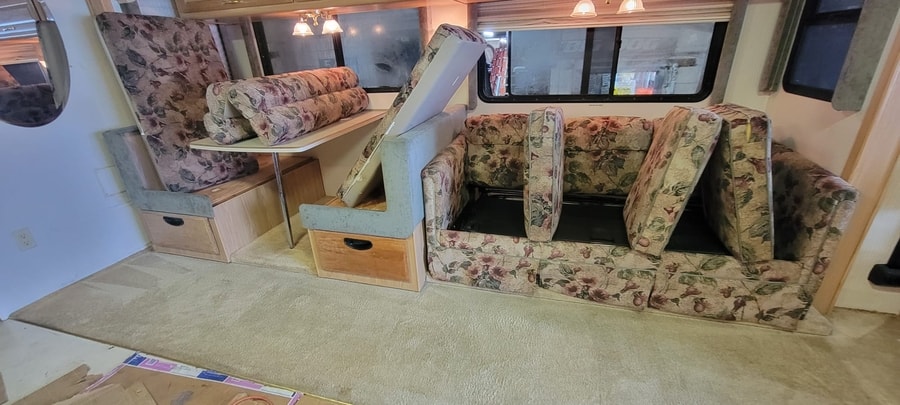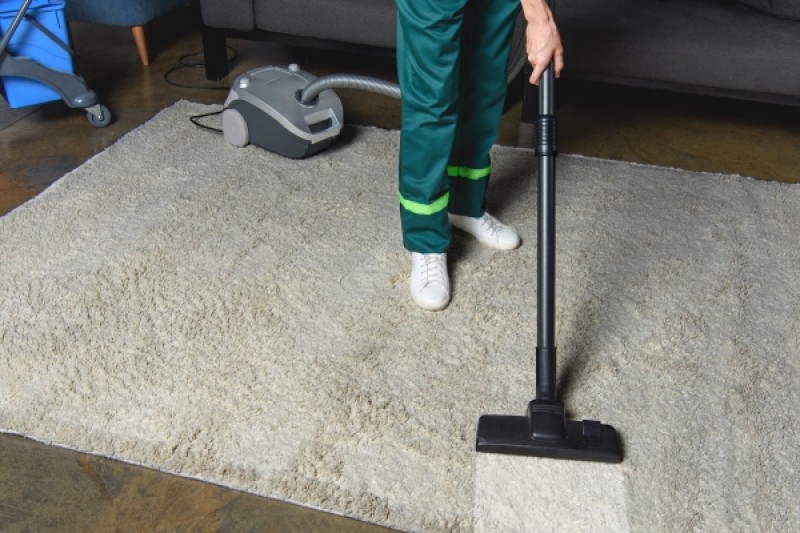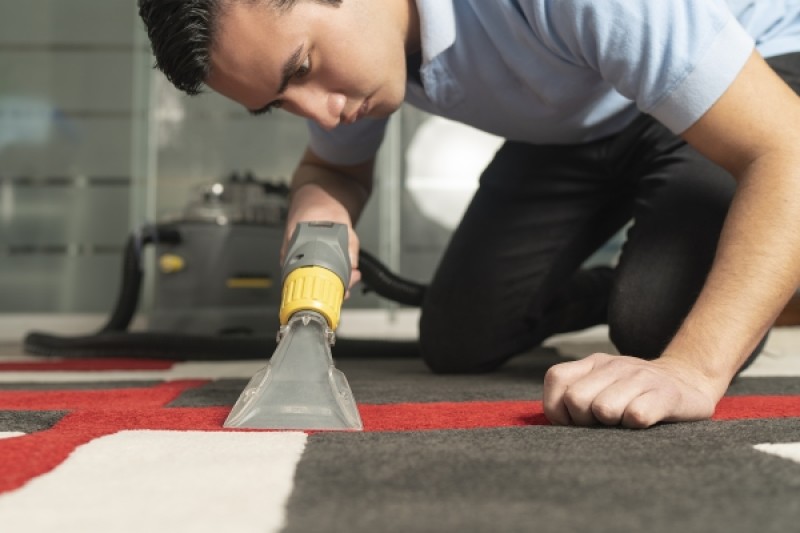Carpets are a staple in many homes, providing warmth, comfort, and style to any room. However, with regular use, carpets can quickly become dirty and stained, making them look old and worn out. Whether you choose to clean your carpet at home or opt for a professional carpet cleaning service? Either way, understanding how to read the tag on your carpet can improve your rug-care practices.
Furthermore, mastering the art of deciphering a carpet label like a pro will empower you to make informed purchase decisions, considering factors such as size, type of fibers, and care instructions.. Keep reading to find out everything you need to know about carpet labels!
Understanding Carpet Tags
Understanding carpet tags is crucial for proper care. These labels hold valuable information on cleaning methods and materials. Just like decoding a message, deciphering these tags helps you make informed decisions. Check for cleaning instructions and whether professional carpet cleaning is recommended. The tag may guide you on suitable products or warn against certain threats. Familiarizing yourself with these labels ensures your carpets receive the care they need, prolonging their lifespan.
Where are Tags found on a Carpet?
Tags on carpets are typically found on the back of the carpet, near one of the corners. They are often attached to the carpet through a small loop, string, attached tag, or sewn sticker. These tags can contain important information such as the brand, style, location of manufacturing, and material of the carpet. In some cases, the tags may also include care instructions and warranty information. It is important to keep these tags intact as they can serve as a reference for any future maintenance or repair needed for the carpet. Additionally, some manufacturers may require the tag to be present for any warranty claims.
What information does a Carpet Label include?
Carpet labels conveniently include all kinds of useful information. However, in order to make the most of the carpet tag and choose the right carpet cleaning solution, you need to get familiar with carpet jargon:
- Density and twist - These specifications are strong indicators of carpet durability. Density refers to the proximity of fiber strands, expressed in fibers per square inch. A denser carpet withstands impact better, staying in good condition for longer. Dense carpets are easier to clean as dirt doesn’t sink deep, requiring less effort to remove. Twist indicates how many times a fiber is twisted per inch. A twist level of 4 or more suggests greater resilience and less likelihood to unravel. To choose a durable carpet, at least one of the two indicators (density and twist) must be high.
- Fiber type - When considering the material of the carpet, a wide range of options are available. The most popular fiber types include nylon, polyester, wool, olefin, and acrylic. A majority of consumers prefer nylon due to its moderate price, satisfactory stain resistance, and easy rug cleaning.
- R-value - One benefit of using carpets is that they make rooms warmer. Carpets not only enhance the interior’s inviting look but also contribute to insulation. The thermal resistance is called R-value, is sometimes indicated on the carpet label.
- Care and cleaning - Most carpet labels recommend using a solution of carpet shampoo and water or professional carpet cleaning. Regular vacuuming is often mentioned as a way to keep carpets clean, attractive, and reduce costs with carpet cleaner NYC services.
- Country of origin - Labels must disclose the country where the rug was processed. Therefore, a carpet made in the U.S.A. must genuinely originate from the U.S.A. This requirement is enforced by the Federal Trade Commission
- Carpet cleaning codes - Carpets and upholstery have a series of standard cleaning codes that indicate the correct cleaning method: W, S, WS, X, and D.
What types of cleaning can be used with each cleaning code?
Each of the five cleaning codes indicates the correct cleaning technique. You need to follow these indications in order to keep your carpet in good shape and avoid deteriorating it:
· W - wet cleaning. This type of carpet requires spot cleaning with water only, preferably distilled water. It is also possible to steam clean a rug or use hot water extraction at a rug cleaner in NYC;
· S – solvent cleaning. Avoid water as it could damage the fabric and use a solvent-based cleaning product instead.
· W and S – wet and solvent. You can use either water or solvent, depending on the type of stain you want to remove;
· X – Vacuum only. It’s best to avoid carpets with the X code, limiting your options in case of a stubborn stain as they can only be safely vacuumed.
· D – dry cleaning only. A carpet labeled with the D code can only be cleaned professionally, at a rug cleaner in NYC, for instance.
What happens when there is no tag?
Have you looked everywhere and there is no tag on the carpet, indicating the type of fiber and the cleaning code?
One solution is to go online to the store where you purchased the rug and read the cleaning instructions. A reputable online store should display product information and cleaning instructions online for every rug they are selling.
If you don’t have access to the seller’s website or the carpet has been purchased offline, you can take it to the best carpet cleaning service in your area and ask for help. A professional cleaner should be able to tell what type of care your carpet needs, whether it’s dry cleaning only or washing with rug shampoo.
Dealing with deeply embedded dirt and stains? Does the carpet label indicate dry cleaning only or do you prefer to save time and effort and use a carpet cleaning service? Pristine Green Cleaning is here to assist with keeping your home clean and hygienic. We help you enjoy every square inch of your carpets and get rid of harmful bacteria and fungi. Contact us at 347-871-6530! We are open 7 days 9 am – 9 pm!
Frequently Asked Questions
Density refers to the proximity of fiber strands, expressed in fibers per square inch.
Carpets not only enhance the interior’s inviting look but also contribute to insulation. The thermal resistance is called R-value, is sometimes indicated on the carpet label.
Labels must disclose the country where the rug was processed. Therefore, a carpet made in the U.S.A. must genuinely originate from the U.S.A.
Carpets and upholstery have a series of standard cleaning codes that indicate the correct cleaning method: W, S, WS, X, and D.
W - wet cleaning. This type of carpet requires spot cleaning with water only, preferably distilled water. It is also possible to steam clean a rug or use hot water extraction at a rug cleaner in NYC
One solution is to go online to the store where you purchased the rug and read the cleaning instructions. A reputable online store should display product information and cleaning instructions online for every rug they are selling.
When considering the material of the carpet, a wide range of options are available. The most popular fiber types include nylon, polyester, wool, olefin, and acrylic.
If you don’t have access to the seller’s website or the carpet has been purchased offline, you can take it to the best carpet cleaning service in your area and ask for help. A professional cleaner should be able to tell what type of care your carpet needs, whether it’s dry cleaning only or washing with rug shampoo
These labels hold valuable information on cleaning methods and materials.
Tags on carpets are typically found on the back of the carpet, near one of the corner




